
Auxin Regulates Growth of a Characean Alga
Plant Physiology, Plant Physiology: On The Inside, Research, Research Blog0 Comments
/
Auxin regulates many aspects of growth and development in land plants, but the origin and evolution of auxin signaling and response mechanisms remain largely unknown. Genome analyses of the moss Physcomitrella patens revealed the presence of the principal gene families involved in auxin homeostasis and…
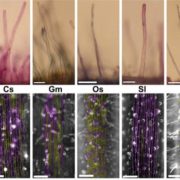
Is All Root Hair Development the Same?
Plant Physiology, Plant Physiology: On The Inside, Research, Research BlogRoot hairs are long tubular extensions of root epidermal cells that greatly increase the root surface area and thereby assist in water and nutrient absorption. Root hairs are found in nearly all vascular plants, including angiosperms, gymnosperms, and lycophytes, and they exhibit similar cellular features,…
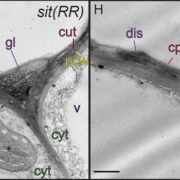
ABA is Required for Cuticle Formation Independent of Water Stress
Blog, Plant Physiology, Plant Physiology: On The Inside, ResearchThe waxy cuticle, a key barrier to desiccation and pathogen entry, is a dynamic structure, the composition, area, permeability and thickness of which can change in response to environmental conditions. For example, water deficit in Arabidopsis (Arabidopsis thaliana) triggers an increase in the accumulation…
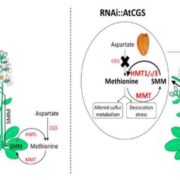
A Possible Strategy for Increasing Methionine Titer in Seeds
Plant Physiology, Plant Physiology: On The Inside, ResearchMethionine is a nutritionally essential sulfur-containing amino acid found at low levels in plants and in their seeds. It often limits the nutritional value of crop plants as a source of dietary protein for humans and animals. In plants, methionine plays key roles in protein synthesis and mRNA translation,…
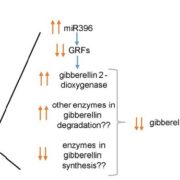
Solar UV-B Inhibits Growth of Maize Leaves
Plant Physiology, Plant Physiology: On The Inside, ResearchGrowth inhibition is one of the most consistent plant responses to Ultraviolet-B (UV-B) exposure; this radiation, both as part of the solar spectrum in the field and from UV-B lamps in controlled environments. In this work, Fina et al. (10.1104/pp.17.00365) demonstrate that the UV-B levels…
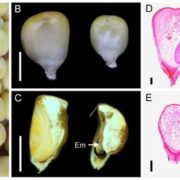
Vitamin B6 Is Essential for Maize Embryogenesis
Plant Physiology, Plant Physiology: On The Inside, ResearchVitamin B6 is synthesized de novo in plants, fungi, archeae, and most eubacteria, but not in animals, including humans, which have to obtain it from dietary sources. Vitamin B6 is an essential cofactor for a range of biochemical reactions and a potent antioxidant. In plants, it plays important roles…

Light Direction, Absorption, and Photosynthesis
Plant Physiology, Plant Physiology: On The Inside, ResearchPlant photosynthesis generally increases with irradiance until light saturation occurs. The directional quality of light, however, can affect its penetration and absorption within a leaf. For example, increasing the angle of incidence (from perpendicular) at which light intersects the leaf surface decreases…
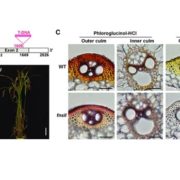
A Flavone Synthase that Alters Lignin
Plant Physiology, Plant Physiology: On The Inside, ResearchLignin, a ubiquitous phenylpropanoid polymer found in the cell walls of vascular plants, is derived primarily from oxidative couplings of monolignols (p-hydroxycinnamyl alcohols). By filling up spaces between cell wall polysaccharides (cellulose and hemicelluloses), lignin confers increased mechanical…

Folate, DNA Methylation and Flowering Time
Plant Physiology, Plant Physiology: On The Inside, ResearchTetrahydrofolate (THF) and its derivatives, collectively termed folates, are a group of essential B-complex vitamins that have long been recognized as necessary nutrients to support normal cell differentiation and growth. Folates function as co-enzymes in one-carbon transfer reactions and play a central…

